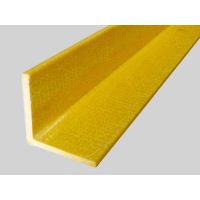Hengshui Hongwo Technology Co., Ltd., specialize in producing high-quality Fiberglass H-beam Profile products, focusing on delivering reliable and efficient solutions. Our advanced manufacturing techniques ensure each H-beam profile is precise and consistent. We use premium-grade materials to create beams that are lightweight yet extremely strong and durable, ideal for various applications from construction to industrial use.




Fiberglass H-Beam Profile Specification:
To provide a more specific range of sizes for fiberglass H-beam profiles, let’s consider some common dimensions.
- Height and Width of the Beam (H and B): For the fiberglass H-beam, the height (H) and width (B) typically range from 100 mm (4 inches) to 600 mm (24 inches). The height refers to the vertical section, while the width pertains to the horizontal flanges. These dimensions, often similar, can vary, with standard sizes extending from smaller beams, like 100 mm x 100 mm, to larger ones up to 600 mm x 300 mm.
- Flange Thickness (T): The flange thickness (T) of the beam, which is the thickness of the horizontal sections at the top and bottom, typically ranges from 6 mm (0.24 inches) to 25 mm (1 inch).
- Web Thickness (t): The web thickness (t), pertaining to the beam’s central vertical section, is essential for its load-bearing capacity. This thickness generally ranges from 5 mm (0.2 inches) to 20 mm (0.8 inches).
- Length: The standard length of these beams varies, typically ranging from 3 meters (10 feet) to 12 meters (40 feet). However, they can be custom cut to specific lengths as needed to suit various application requirements.
- Weight per Meter: This is often specified for ease of handling and to calculate load during transportation and installation.
- Load Capacity: The maximum load the beam can handle, which depends on its size, shape, and the material’s properties.
- Material Specifications: Fiberglass beams can be made with different types of resins and fiber reinforcements, affecting their strength, thermal resistance, and other properties.
Remember, the choice of size will depend on the structural load requirements, environmental conditions, and installation considerations of your specific project.














